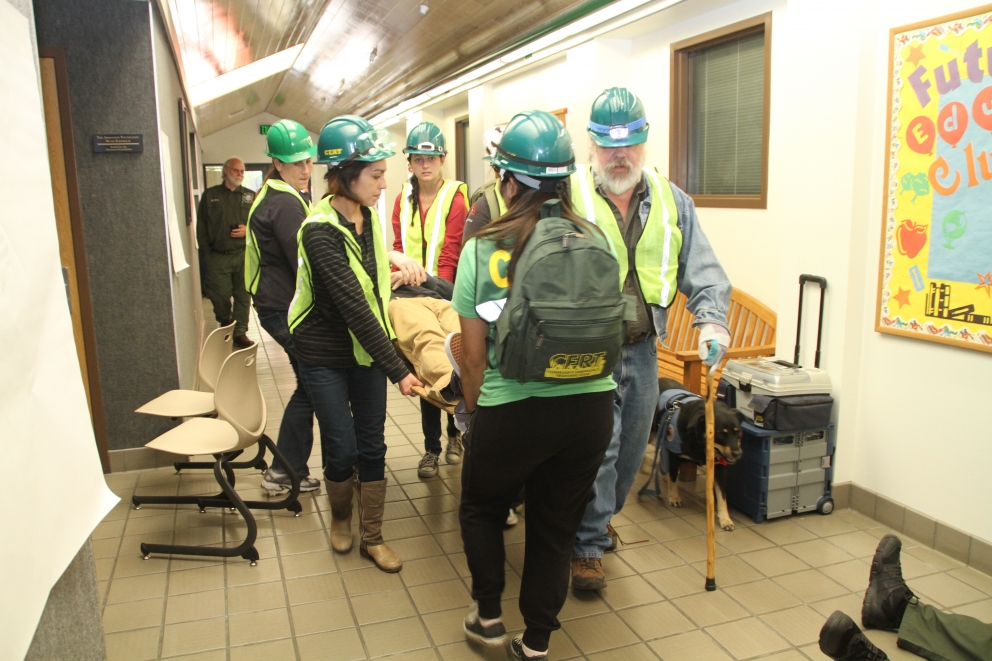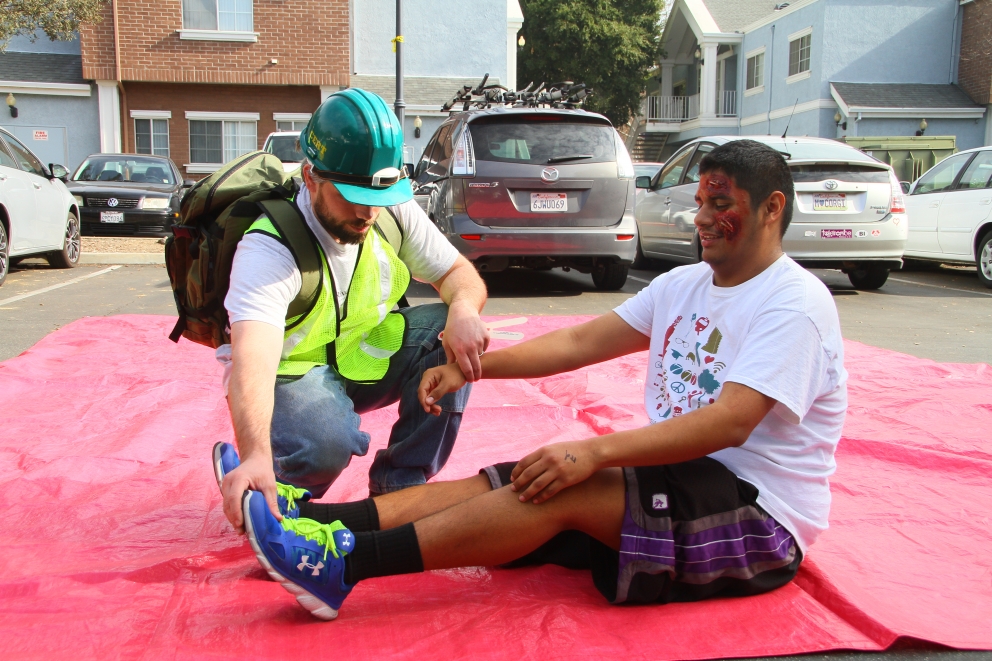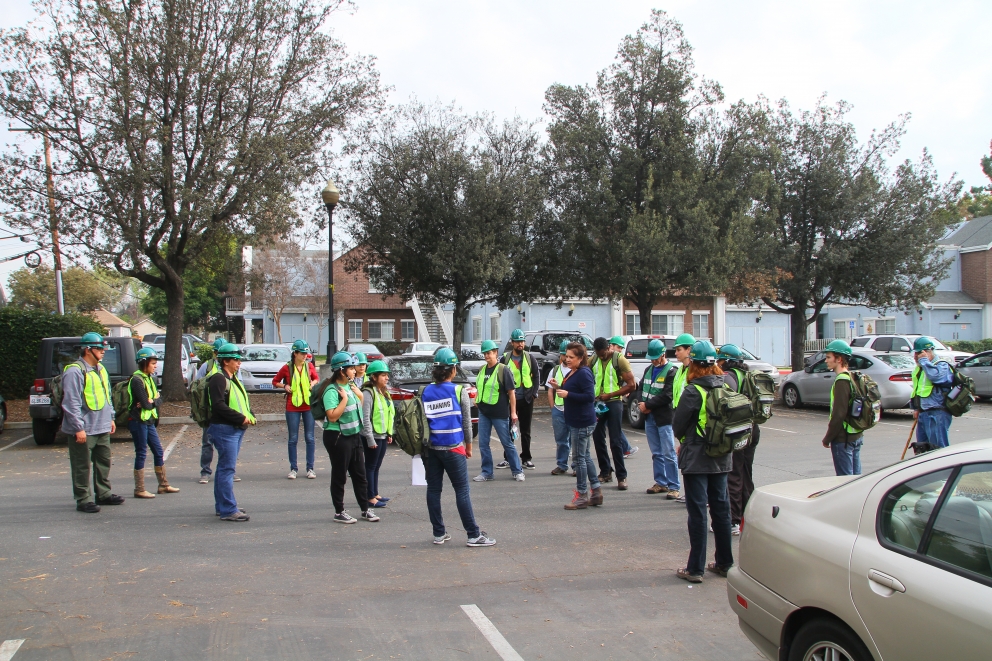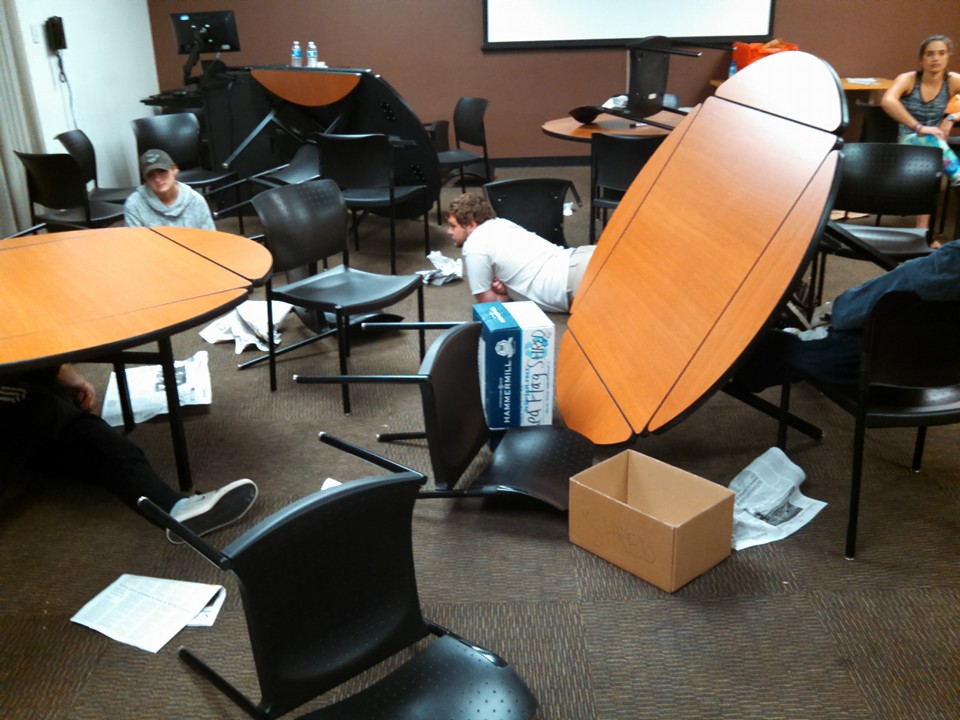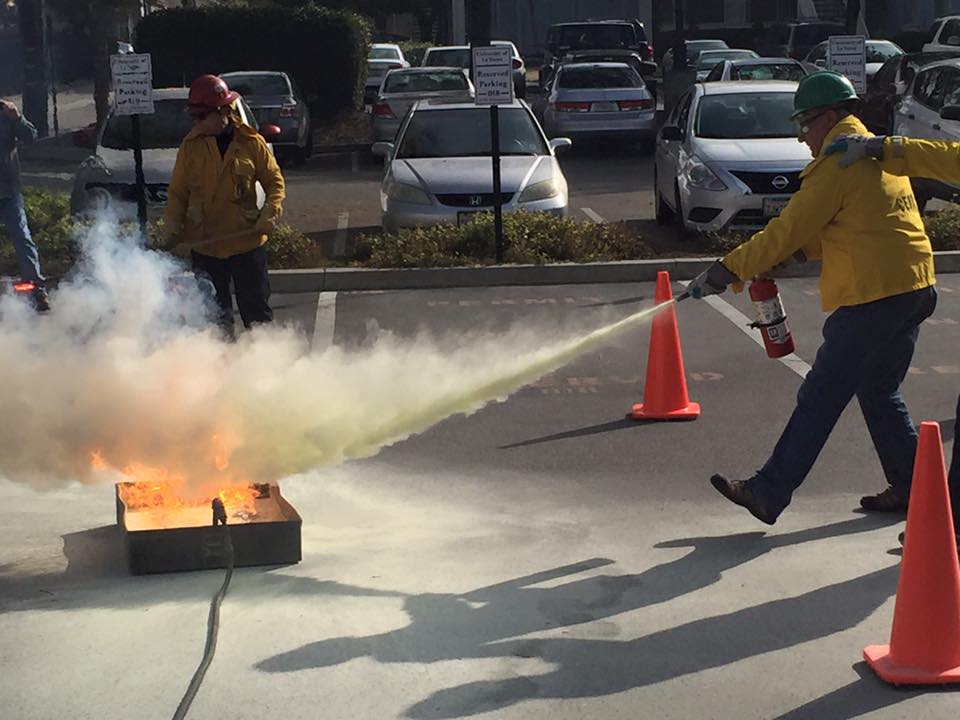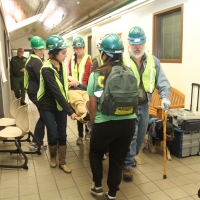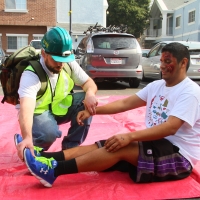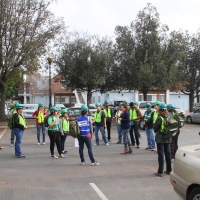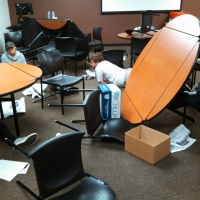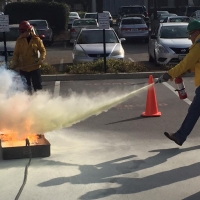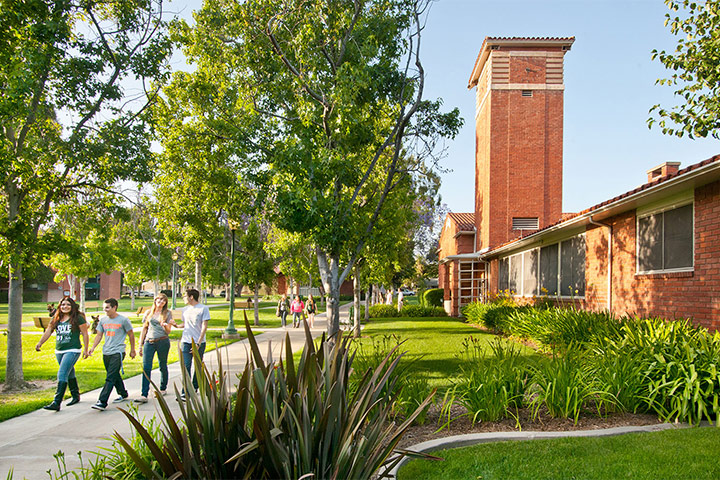University Completes First Year of On-Campus CERT Training
When the 8.0-magnitude earthquake struck, it toppled tables, chairs and books. The rescuers who entered the Presidents Dining Room found victims suffering from injuries, some severe. But in reality, none of these things actually happened.
It was a scenario played out in May for the University of La Verne’s Community Emergency Response Team disaster training program, one of the few offered at a college campus in the region.
Fifty people, including students, faculty, staff and community members completed seven weeks of training in January and May.
Chief Financial Officer Avedis “Avo” Kechichian, who oversees Risk Management, wants to see more sessions at the University.
“Hopefully, we will continue to do training in the fall,” Kechichian said.
Director of Risk Management Alexander Soto decided to bring the program to the University after taking Pomona College’s CERT class in February 2015. He cited the need for the University to be prepared for emergencies, and be able to assist Campus Safety.
The Los Angeles County Fire Department led both training groups at the University of La Verne, teaching participants skills such as first aid, the triage system and assessing buildings for structural integrity. La Verne firefighters taught fire suppression techniques, such as the proper use of a fire extinguisher. University officials plan to participate in “train the trainer” sessions so they can lead future sessions.
The Los Angeles City Fire Department launched the CERT concept in 1985, providing training to residents, as well as private and government employees, according to the Federal Emergency Management Agency. It is needed because following a major disaster, firefighters, paramedics, law enforcement and other first responders will be stretched thin and people will have to help each other.
“The professional first responders will be overwhelmed,” Soto said. “Resources that we take for granted may or may not be available. Most likely what will occur is that the fire department will roll up and conduct a very brief size-up with our incident commander to determine if there are any injured or trapped people, as well as hazards involving chemicals, electricity or fires.”
CERT training is often hosted by cities, but University of La Verne is one of only seven higher education institutions offering it in Southern California.
“We’ll be better able to weather the storm than a campus that is not trained,” said Director of Risk Management Alex Soto.
People who complete the course learn about hazardous situations that could affect the campus, such as potential structural issues at various buildings. If a building is mildly damaged, participants are trained to enter safely and conduct a search for people.
In the case of a microburst – a downdraft in a strong thunderstorm that could bring heavy rain and wind damage – participants examine areas on campus that could be affected by flooding, Soto said.
People who complete the program receive “Go Bags” filled with fundamental supplies to help in searches such as flashlights, gloves, helmets, earplugs, goggles and reflective CERT vests.
Soto said the program is another layer of preparation that will benefit the University when the “Big One” or other emergencies hit.
“We all know that we live in earthquake country,” he said. “That would be the most likely natural disaster that could happen. The sad fact that most people in earthquake country are ill prepared.”
Los Angeles County Fire Department Acting Assistant Fire Chief Jim Enriquez said his department considers it an honor to provide the training at the University of La Verne.
“I commend the University of La Verne leadership for supporting this private and public partnership in our shared objective of strengthening emergency preparedness capabilities in the communities we serve,” Enriquez said.
To learn more about this program contact Soto at asoto@laverne.edu or 909-448-4516.
